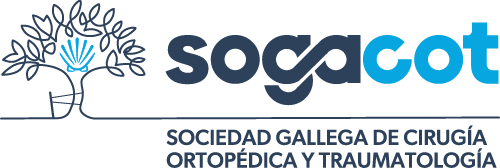"Resultado oncológico y funcional siguiente a la sacroectomía para el condroma sacro."Christopher A. Hulen, MD1, H. Thomas Temple, MD1, William P. Fox, PhD2, Andrew A. Sama, MD3, Barth A. Green, MD4 and Frank J. Eismont, MD1
1 Department of Orthopaedic Surgery, University of Miami, Ortho-Rehab Building (D-27) Room R303, Miami, FL 33101. E-mail address for C.A. Hulen: chulen@med.miami.edu. E-mail address for H.T. Temple: htemple@med.miami.edu. E-mail address for F.J. Eismont: feismont@med.miami.edu 2 Francis Marion University, P.O. Box 100547, Florence, SC 29501. E-mail address: wfox@fmarion.edu 3 Hospital for Special Surgery, 535 East 70th Street, New York, NY 10021. E-mail address: samaa@hss.edu 4 Department of Neurological Surgery, University of Miami, 1095 N.W. 14th Terrace, Miami, FL 33136. E-mail address: bgreen@med.miami.edu
Background: Sacral chordoma is a rare, low to intermediate-grade tumor that poses substantial challenges in terms of timely diagnosis and adequate treatment. Few studies have examined the oncologic and functional outcomes of patients treated for sacral chordoma.
Methods: The clinical records of sixteen patients who had undergone sacrectomy for chordoma between 1985 and 2001 were evaluated retrospectively. All patients underwent resection by means of a sequential combined anterior and posterior approach. Patients were followed clinically at six-month intervals following recovery from the index surgical procedure. The disease onset, treatment, hospital stay, recurrence rates, survival, adjuvant therapy, functional outcome measures, and complications were evaluated.
Results: The average age at the time of diagnosis was sixty-one years. The mean tumor size was 15.2 cm in diameter, and all patients had a resection involving S1 or S2. The mean duration of follow-up was sixty-six months, and the tumor recurred in twelve of the sixteen patients. The mean time to metastasis was fifty months. Four patients were clinically disease-free at a mean follow-up of 94.5 months, while five patients died as a result of progressive local or metastatic disease at a mean follow-up of 31.4 months. Only one patient had normal bowel and bladder control postoperatively, and only three were able to walk without assistive devices. Eight patients had wound complications, and one patient had a deep-vein thrombosis. With the numbers available, neither negative margins at the time of initial tumor resection nor adjuvant radiation therapy had a significant impact on survival or local recurrence. More cephalad levels of resection were associated with significantly worse bowel (p = 0.01) and bladder (p = 0.01) control. Complications were frequent and were more common with a larger tumor size at the time of presentation (p = 0.034).
Conclusions: The treatment of sacral chordoma is an arduous clinical undertaking that requires a multidisciplinary approach and attention to detail from the outset. Despite aggressive well-planned surgical management and adherence to strict surveillance protocols, frequent recurrence and the late onset of metastatic disease are to be expected in a substantial proportion of patients, especially those with a very large chordoma or one at a more cephalad level. Adequate surgical treatment results in substantial functional impairment and numerous complications; however, it does offer the possibility of long-term disease-free survival. We advocate an attempt at complete resection, when there is still a possibility of cure, and aggressive treatment of local recurrences.
The Journal of Bone and Joint Surgery (American). 2006;88:1532-1539.


